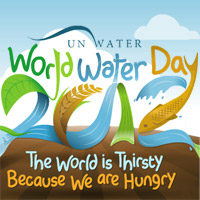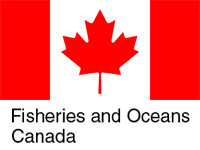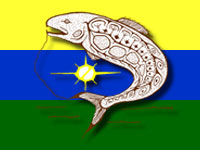
News |
- Obama Approves Arctic and Atlantic Drilling
- CEAA - Keeping Environmental Law Relevant
- Manitoba BiPole III Review Flawed
- Genetically Modified Corn Under Scrutiny
- World Water Day - Right to Water Theme
- DFO - Sinking In the Deep End
- Canada to Seek Alternative to Austerity?
- Manitoba Moose Populations Still A Concern
- KI Conflict Continues Despite Land Withdrawal
- CEAA Releases Keeyask EIS Guidelines
- Court Says Logging Road In Park Not Logging
- Opposition to Enbridge Northern Gateway Pipeline Growing
| Obama Approves Arctic and Atlantic Drilling | 30 March 12 |
 The Obama administration approved further offshore oil development in the Arctic and Atlantic Oceans March 28, 2012.
The Obama administration approved further offshore oil development in the Arctic and Atlantic Oceans March 28, 2012.It approved Shell's oil spill response plan for the Arctic waters of the Beaufort Sea. "There is no viable way to clean up an oil spill in the extreme conditions of America's Arctic Ocean, yet the Obama administration continues to give the green light to Shell Oil's plans for drilling this summer," said Cindy Shogan, Executive Director of the Alaska Wilderness League. "It's deeply disappointing that President Obama is choosing to ignore the enormous risks of opening the Arctic Ocean to oil drilling," said Miyoko Sakashita, oceans director at the Center for Biological Diversity. "All signs point to environmental disaster if an oil spill were to occur in the harsh Arctic waters – it's just absurd that Shell's unproven response plan got the green light." An oil spill in the Beaufort Sea would affect Canada. On the same day the Obama administration also allowed seismic exploratory surveys for oil off the coast of Virginia in the Atlantic Ocean. In addition to the seismic surveys off the east coast paving the way for oil drilling, the surveys themselves will be harmful to marine wildlife. View March 30, 2012 Bloomberg Businessweek articleView March 28, 2012 Common Dreams article View March 28, 2012 Alaska Wilderness League press release (PDF) View March 28, 2012 Center for Biological Diversity press release View March 28, 2012 Reuters article View March 28, 2012 Chicago Tribune article View March 28, 2012 The Hill blog article View March 2, 2012 ClimateStoryTellers.org article Source:
Common Dreams
|
|
 Print version Print version |
Top |
| CEAA - Keeping Environmental Law Relevant | 23 March 12 |
 March 13, after a mandatory five-year review, Canada's House of Commons Standing Committee on Environment and Sustainable Development released its report on the Canadian Environmental Assessment Act (CEAA). The report was received with more than raised eyebrows, seen as more public relations messaging than anything else.
March 13, after a mandatory five-year review, Canada's House of Commons Standing Committee on Environment and Sustainable Development released its report on the Canadian Environmental Assessment Act (CEAA). The report was received with more than raised eyebrows, seen as more public relations messaging than anything else."The long and the short of it, the report did not meet any acceptable standard for what a legislative review should look like," said NDP Environment Critic Megan Leslie. "The report you will have before you is a fictitious re-enactment of committee hearings." Green Party leader, Elizabeth May was scathing, "Pipelines, oil sands development, projects big and small will be rubber-stamped in jig time," Both Liberal and New Democratic Party committee members filed minority reports. The committee process was abruptly shortened and many registered presenters were told they would not present to the committee. Public participation in review of environmental law is a core responsibility of the Canadian government under CEAA. Most of the the Standing Committee's report is nothing more than a plan to slash environmental regulations companies need to abide by to get projects built. Projects like the Enbridge Northern Gateway Pipeline. View March 22, 2012 iPolitics articleView March 21, 2012 Environmental Law Centre (Alberta) article View March 14, 2012 Huffington Post article View Statutory Review of the Canadian Environmental Assessment Act View Dissenting Report from the Official Opposition New Democratic Party on the Seven-year review of CEAA. View Dissenting Opinion by the Liberal Party of Canada on the Report of the Statutory Review of the Canadian Environmental Assessment Act (CEAA) |
|
 Print version Print version |
Top |
| Manitoba BiPole III Review Flawed | 23 March 12 |
 Manitoba Wildlands filed review comments about Manitoba Hydro's environmental statement for the contentious BiPole III transmission project. The proposed corridor and transmission system will be a 500 kv high-voltage direct current system to move power from northern dams to a converter station south east of Winnipeg.
Manitoba Wildlands filed review comments about Manitoba Hydro's environmental statement for the contentious BiPole III transmission project. The proposed corridor and transmission system will be a 500 kv high-voltage direct current system to move power from northern dams to a converter station south east of Winnipeg.Concerns about large mammals, especially woodland caribou, elk, and moose arise from the utility's first filing. Seven woodland caribou herds are located in the study area, with greater risks for four herds. Due to decline in population and years of public concern, Manitoba closed the moose hunt in 2011. Recently the government announced the moose population, in regions where the BiPole III will be built, has stabilized. Manitoba Hydro was allowed to define the project area, study area, and local study area so it can pick information to use, including to self assess impacts. Access to first filing materials is inadequate, with many improvements needed in the supplemental filing. View March 16, 2012 Manitoba Wildlands BiPole III Environmental Impact Statement (EIS) Comments (PDF)View March 2012 Manitoba Wildlands BiPole III EIS Comments Attachment list and materials (PDF) View March 31, 2010 Manitoba Wildlands BiPole III Scoping Document Comments (PDF) View March 31, 2010 Manitoba Wildlands BiPole III Scoping Documents Comments List of References and Materials (PDF) View Manitoba Hydro BiPole III Transmission Project Environmental Impact Statement View Manitoba Conservation Online Public Registry files - Manitoba Hydro BiPole III Transmission Project, file #5433/00 View Manitoba Wildlands BiPole III page Sources:
Manitoba Hydro, Manitoba Wildlands
|
|
 Print version Print version |
Top |
| Genetically Modified Corn Under Scrutiny | 23 March 12 |
 A group of 22 academic plant scientists sent a letter March 5, 2012 to the US Environmental Protection Agency (EPA) telling regulators that action is needed to avoid harmful effects from biotech corn that is losing resistance to pests.
A group of 22 academic plant scientists sent a letter March 5, 2012 to the US Environmental Protection Agency (EPA) telling regulators that action is needed to avoid harmful effects from biotech corn that is losing resistance to pests.Monsanto introduced its corn rootworm protected products, which contain a protein referred to as "Cry3Bb1," in 2003. The corn rootworm product is supposed to reduce the need to put insecticides into the soil, essentially making the corn plants toxic to the worms that feed on their roots. Problems with insect resistance have been reported in parts of Illinois, Iowa, Minnesota, Nebraska and South Dakota. New evidence shows the genetic modification for corn is losing its effectiveness, making plants vulnerable to rootworm damage and potentially significant production losses. "This is not something that is a surprise... but it is something that needs to be addressed," said Joseph Spencer, a corn entomologist with the Illinois Natural History Survey, part of the University of Illinois. France announced March 16, 2012 that it would temporarily ban the growing of Monsanto's genetically modified corn, citing recent scientific studies that show growing the corn variety poses "important risks" to the environment. View March 19, 2012 Digital Journal articleView March 18, 2012 Nation of Change article View March 17, 2012 Global Research article View March 16, 2012 Bloomberg article View March 9, 2012 Reuters article View March 28, 2012 Huffington Post article Sources:
Bloomberg and Reuters
|
|
 Print version Print version |
Top |
| World Water Day - Right to Water Theme | 19 March 12 |
 March 22, 2012 is World Water Day, held annually on the same date to focus attention on the importance of freshwater and to advocate for sustainable management of freshwater resources. UNCED in Rio, 1992, recommended an international day, and the United Nations designated World Water Day, starting the next year in 1993.
March 22, 2012 is World Water Day, held annually on the same date to focus attention on the importance of freshwater and to advocate for sustainable management of freshwater resources. UNCED in Rio, 1992, recommended an international day, and the United Nations designated World Water Day, starting the next year in 1993.The 2012 theme is 'Water and Food Security'. Water Justice and recognition of the right to water are themes from this year's Alternative World Water Forum, held as an alternative to the government and industry World Water Forum in Marseilles during March 2012. The Alternate World Water Forum supports delivery on the United Nations General Assembly June 2010 motion that 'access to safe and clean drinking water and sanitation is a human right', with all other human rights in the United Nations Declaration of Human Rights. Canada's Premiers issued a statement to kick off Canada Water Week on March 19,2012. The Premiers "encourage individuals, businesses and organizations across Canada to work in partnership to improve stewardship of our valuable water resources." View March 16, 2012 Common DreamsView United Nations World Water Day website View One Drop website View Blue Planet Project website View Alternative World Water Forum View World Water Day page on The Council of Canadians View Council of the Federation/Canada website View March 22, 2012 WRI Insights article Sources:
United Nations, Common Dreams, Council of Federation
|
|
 Print version Print version |
Top |
| DFO - Sinking In the Deep End | 19 March 12 |
 The Canadian Federal Government is getting ready to sink decades of habitat protection for fish species. According to information leaked to Otto Langer, a retired federal biologist, new wording of federal legislation would make projects like Enbridge's Northern Gateway pipeline a lot easier to pass federal review.
The Canadian Federal Government is getting ready to sink decades of habitat protection for fish species. According to information leaked to Otto Langer, a retired federal biologist, new wording of federal legislation would make projects like Enbridge's Northern Gateway pipeline a lot easier to pass federal review.In a statement Langer indicated; "This is a serious situation and will put Canada back to where we were in the pre-1976 period where Canada had no laws to protect fish habitat and no way to monitor the great industrial expansion that occurred in Canada, with the consequential loss of major fish habitat all across Canada," Langer observed that since the Enbridge Northern Gateway pipeline would have to cross hundreds of streams and rivers, the loosening of federal legislation would only make it easier for the project to be built. When asked in question period by NDP MP Fin Donnelly, Fisheries Minister Keith Ashfield denied that any decision to re-word federal legislation protecting fish habitat had been made. Minister Ashfield's office did not deny Langer's claim, adding that changes are needed. The proposed new wording includes many exemptions plus watering down of fish habitat protection. Exemptions like giving the minister "or a person prescribed by the regulations" the authority to allow and "adverse effect" on fish. In addition, 400 letters sent to the fisheries department employees, 200 of which are scientists, saying they may be 'affected' by a 'work force adjustment' directive – would certainly leads one to wonder why the federal government is seeking to gut its Department of Fisheries and Oceans. View March 13, 2012 Vancouver Sun articleView March 14, 2012 Edmonton Journal article View March 15, 2012 Edmonton Journal article View December 12, 2011 Edmonton Journal article View March 15, 2012 MiningWatch Canada article View March 19, 2012 Times Colonist article View March 21, 2012 Vancouver Sun article |
|
 Print version Print version |
Top |
| Canada to Seek Alternative to Austerity? | 19 March 12 |
 Canada's federal – Harper – government, now a majority, has signaled the upcoming budget will be a fiscal austerity budget. The federal government's logic that a budget led by cuts leads to business and consumer confidence is an illusion. The failure of austerity budgets has been soundly exposed by recent experiences in Europe.
Canada's federal – Harper – government, now a majority, has signaled the upcoming budget will be a fiscal austerity budget. The federal government's logic that a budget led by cuts leads to business and consumer confidence is an illusion. The failure of austerity budgets has been soundly exposed by recent experiences in Europe.'While Prime Minister Harper was at Davos signaling major cuts to Old Age Security in the forthcoming budget, the leaders of 11 international organizations – including the International Monetary Fund, the World Bank and the World Trade Organization – issued a joint statement warning about the economic and social risks of austerity programs' – Alternative Federal Budget 2012 CCPA. Both the Canadian Center for Policy Alternatives and the Green Budget Coalition Have identified budget options for Canada. View March 15, 2012 Huffington Post articleView Canadian Center for Policy Alternatives suggestions View Canadian Center for Policy Alternatives report View Green Budget website |
|
 Print version Print version |
Top |
| Manitoba Moose Populations Still A Concern | 9 March 12 |
 Recent aerial surveys in west-central Manitoba show the moose population in the Porcupine and Duck mountain regions remains low but stable. Manitoba Conservation and Water Stewardship announced March 1, 2012, moose hunting was cancelled in the Porcupine and Duck mountain regions, Game Hunting Area (GHA) 13 and 13A, May 26, 2011 after aerial surveys showed sharp population declines.
Recent aerial surveys in west-central Manitoba show the moose population in the Porcupine and Duck mountain regions remains low but stable. Manitoba Conservation and Water Stewardship announced March 1, 2012, moose hunting was cancelled in the Porcupine and Duck mountain regions, Game Hunting Area (GHA) 13 and 13A, May 26, 2011 after aerial surveys showed sharp population declines.Manitoba Conservation and Water Stewardship also put a partial closure in place January 20, 2012 on moose hunting in parts of GHA 26, which stretches from Lake Winnipeg to the Manitoba-Ontario border between the Winnipeg and Wanipigow rivers. Moose populations have declined by almost 50 per cent in this part of the province since 2006. Moose hunting closure areas apply to both licensed hunting and treaty and Aboriginal rights-based hunters. The department says it has consulted local First Nations and Métis people to find solutions and will continue to work with Aboriginal communities and stakeholders to develop long-term plans to address low moose populations across the province. However hunting and conservation groups feel that more funding and better data is needed. View March 6, 2012 Beausejour Review articleView March 1, 2012 Government of Manitoba news release View January 26, 2012 Manitoba Wildlife Federation press release View January 20, 2012 Government of Manitoba news release View May 26, 2011 Government of Manitoba news release View May 27, 2010 CBC News article View January 21, 2012 CBC News article View Manitoba Wildlands Biodiversity & Species page Sources:
Government of Manitoba, Lac Du Bonnet Wildlife Association
|
|
 Print version Print version |
Top |
| KI Conflict Continues Despite Land Withdrawal | 9 March 12 |
 The province of Ontario has removed 23,000 square kilometres of land near Kitchenuhmaykoosib Inninuwug (KI) First Nation from future mining claims.
The province of Ontario has removed 23,000 square kilometres of land near Kitchenuhmaykoosib Inninuwug (KI) First Nation from future mining claims.The new restrictions, however, do not affect the God's Lake Resources Sherman Lake Gold Project located about 400 kilometres north of Red Lake Ontario. The gold mining company wants to drill in an area where the First Nation says its ancestors are buried. The company is expected to begin their prospecting this month and have hired a security firm to protect its workers when entering KI territory. KI leaders were in Toronto March 6, 2012 to rally outside the Prospectors and Developers Association of Canada (PDAC) convention - the largest mining industry event of its type in the world. KI Chief Donny Morris travelled to the Sherman Lake site March 7, 2012 to guard against trespass by mining exploration company Gods Lake Resources (GLR). "I cannot allow our graves to be desecrated by a company that is hiring guns to block us on our own land. That is no way to do business," said KI Chief Donny Morris Seven years ago KI was in a similar situation with Toronto-based mining company Platinex. During that struggle, six KI leaders were jailed for six months after protesting Platinex. In 2009 the company withdrew its plans after it reached an agreement with the Ontario government to receive $5 million and a royalty stake in any future developments in the region. View March 7, 2012 KI press releaseView March 7, 2012 Mining.com article View March 6, 2012 APTN article View March 5, 2012 CBC article View March 9, 2012 The First Perspective article View Manitoba Wildlands Aboriginal Court Cases & Consultations Sources:
APTN, CBC
|
|
 Print version Print version |
Top |
| CEAA Releases Keeyask EIS Guidelines | 9 March 12 |
 The Canadian Environmental Assessment Agency (CEAA) has released draft environmental guidelines for the Keeyask Generation Project. The guidelines were drafted following a public review of the CEAA Keeyask Background Document. Manitoba Wildlands provide comments to CEAA on the Keeyask Background Document January 31, 2012.
The Canadian Environmental Assessment Agency (CEAA) has released draft environmental guidelines for the Keeyask Generation Project. The guidelines were drafted following a public review of the CEAA Keeyask Background Document. Manitoba Wildlands provide comments to CEAA on the Keeyask Background Document January 31, 2012.Comments will be accepted on the draft CEAA Keeyask EIS Guidelines until March 28, 2012. Manitoba Wildlands also provided comments on the Manitoba Hydro Keeyask Scoping document February 3, 2012. It is expected the proposed $5.6 billion 695-megawatt Keeyask generation project on the Nelson River at Gull Rapids will be subject to joint federal and provincial environmental review process. As of yet, it is unclear how the joint review process will work. View February 29, 2012 CEAA NoticeView CEAA draft Keeyask Environmental Impact Statement guidelines (PDF) View CEAA, Registry Reference #11-03-64144 – Gull Rapids Keeyask Generation Project View Manitoba Conservation, Online Public Registry #5550 - Manitoba Hydro - Keeyask Generation Project View February 3, 2012 Manitoba Wildalnds Keeyask Generation Scoping Document Comments (PDF) View January 31, 2012 Manitoba Wildlands Keeyask Generation Background Document Comments (PDF) Sources:
CEAA
|
|
 Print version Print version |
Top |
| Court Says Logging Road In Park Not Logging | 2 March 12 |
 Beginning March 1, 2012 bulldozers will once again be authorized to cut down caribou habitat inside Manitoba's Grass River Provincial Park to build the Dickstone Road.
Beginning March 1, 2012 bulldozers will once again be authorized to cut down caribou habitat inside Manitoba's Grass River Provincial Park to build the Dickstone Road."As of right now, this morning, the bulldozers are rolling back into our provincial park to resume their destruction," said Manitoba Wilderness Campaign Director Eric Reder, after a Manitoba Queen's Bench Judge ruled that a road built exclusively for logging, was not prohibited by the Manitoba ban on logging in parks. The Dickstone Road is a controversial logging road being built through Grass River Provincial Park. The road would intersect and disturb calving grounds of threatened woodland caribou in the park. The road will be used exclusively by Tolko to haul logs; public access is not allowed. The Manitoba Government issued a license to Tolko to build a logging road across Grass River Provincial Park August 2009. Two-months earlier The Forest Amendment Act amended The Provincial Parks Act and The Forest Act to prohibit logging in provincial parks, including Grass River Park. Manitoba Wildlands and the Wilderness Committee appealed the Environment Act license September 2009, but the appeals were dismissed. Next the Wilderness Committee applied to the Manitoba Queen's Bench for a rule review to interpret whether a logging road is prohibited by the 2009 amendments to The Provincial Parks Act and The Forest Act. View March 1, 2012 Winnipeg Free Press articleView March 1, 2012 CBC News article View February 15, 2012 Manitoba Court of Queen's Bench decision (PDF) View August 12, 2009 Environment Act License 2896 (Tolko-Dickstone Road) (PDF) View Wilderness Committee, Manitoba Chapter site View previous Manitoba Wildlands coverage:
|
|
 Print version Print version |
Top |
| Opposition to Enbridge Northern Gateway Pipeline Growing | 2 March 12 |
 The Douglas Channel in North Western British Columbia is the proposed route for super tankers to load bitumen from the Enbridge Northern Gateway pipeline project. On February 27th, Prince Rupert British Columbia became the latest community to officially oppose the Northern Gateway pipeline. Prince Rupert councillors unanimously adopted a resolution opposing the pipeline project and outlining the potential devastation from oil super tankers carrying crude oil from the tar sands to Asian markets.
The Douglas Channel in North Western British Columbia is the proposed route for super tankers to load bitumen from the Enbridge Northern Gateway pipeline project. On February 27th, Prince Rupert British Columbia became the latest community to officially oppose the Northern Gateway pipeline. Prince Rupert councillors unanimously adopted a resolution opposing the pipeline project and outlining the potential devastation from oil super tankers carrying crude oil from the tar sands to Asian markets.The Canadian federal government has repeatedly asserted it will push the Northern Gateway pipeline through no matter what. The Union of Municipalities of British Columbia passed a resolution in October 2010 to oppose the construction of the pipeline. First Nations throughout Alberta and B.C. have declared their opposition to the Northern Gateway pipeline, signing the 'Save the Fraser Declaration' which has grown into more than 100 First nations signing, and calling for the ban of any pipeline or oil tanker activity that could threaten the migration of Fraser River salmon. Experts and communities say there is no doubt about potential ecological impact for even minor spills from the Enbridge Northern Gateway pipeline or super tankers carrying oil up and down the West coast of British Columbia. View October 1, 2010 Financial Post articleView January 2011 Common Ground article View February 1, 2012 West Coast Environmental Law article View February 28, 2012 Winnipeg Free Press article View Save The Fraser website View February 29, 2012 Global News article View March 13, 2012 Indigenous Peoples Issues and Resources article |
|
 Print version Print version |
Top |


 RSS Feeds:
RSS Feeds: